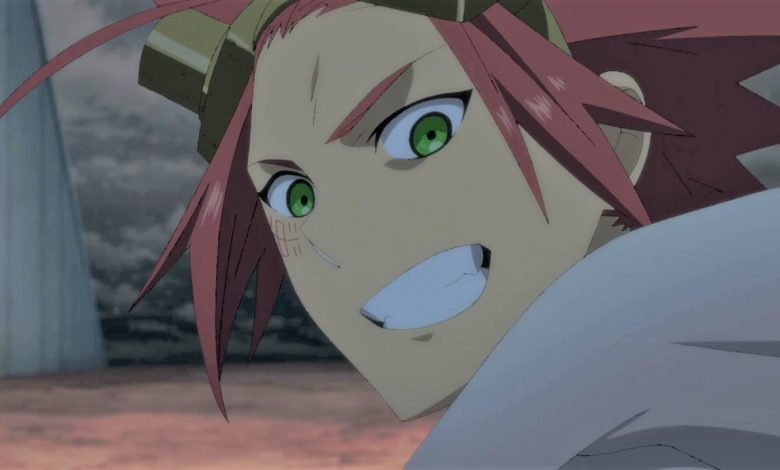 If I were to try and summarize my thoughts about that final episode, I’d say it was kind of… by the books, maybe? There weren’t a lo of surprises there, let’s put it that way. Pretty much everything I expected to happen happened, and nothing that happened was too unexpected. Nothing wrong with that of course, but it does make for a somewhat low-key way for such a high-key (it should be a word) series to go out. I wouldn’t say it was a whimper, but I was hoping for a bigger bang.
If I were to try and summarize my thoughts about that final episode, I’d say it was kind of… by the books, maybe? There weren’t a lo of surprises there, let’s put it that way. Pretty much everything I expected to happen happened, and nothing that happened was too unexpected. Nothing wrong with that of course, but it does make for a somewhat low-key way for such a high-key (it should be a word) series to go out. I wouldn’t say it was a whimper, but I was hoping for a bigger bang.
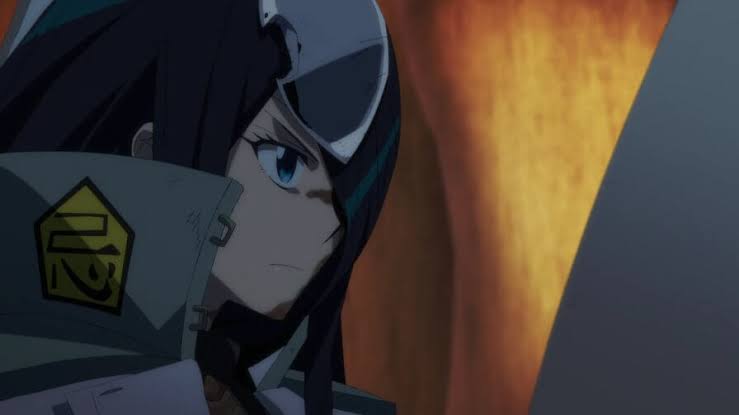 What I’d be kind of curious to know is how much of this was anime-original. The light novel is ongoing of course, and this felt like a pretty conclusive ending by design. Maybe there’ll be a second season and maybe there won’t – most likely even the producers don’t know at this point. But the vibe here is that that anime was trying a little hard to leave things neat and tidy. And that’s more noticeable because generally speaking Sabikui Bisco isn’t a neat and tidy sort of narrative.
What I’d be kind of curious to know is how much of this was anime-original. The light novel is ongoing of course, and this felt like a pretty conclusive ending by design. Maybe there’ll be a second season and maybe there won’t – most likely even the producers don’t know at this point. But the vibe here is that that anime was trying a little hard to leave things neat and tidy. And that’s more noticeable because generally speaking Sabikui Bisco isn’t a neat and tidy sort of narrative.
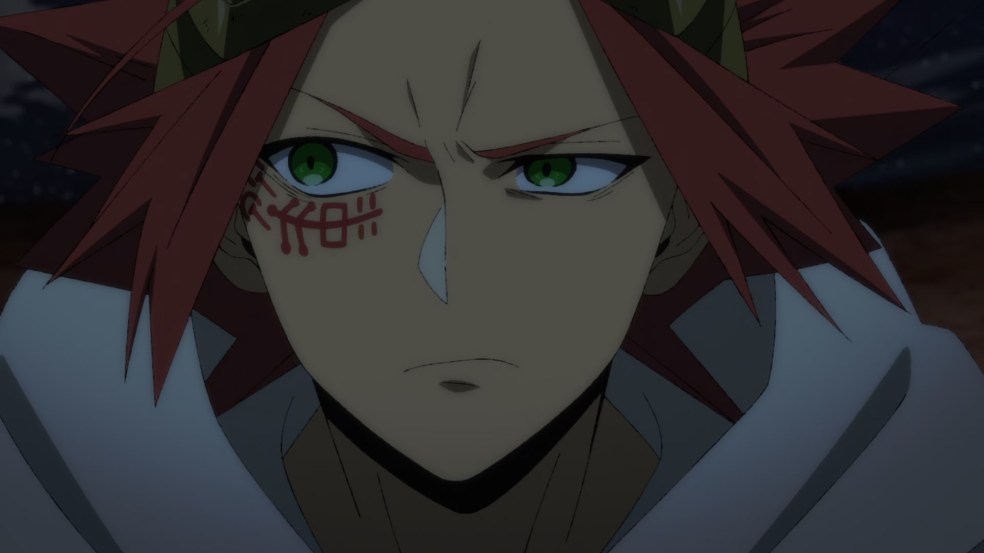 We don’t get a whole lot of explanation for this avalanche of developments. Why Kurokawa essentially fused with the Tetsujin, why Bisco didn’t, why Bisco was able to come back. Rather than the Tetsujin is seems like Bisco basically fused with the rust eater – became the true Sabikui Bisco at last. That means his body is hot (Milo definitely thinks so, but we knew that), and he’s giving off spores left and right. It also means he has the goods to take down the giant governor, though it takes a little help from his friends to close the deal.
We don’t get a whole lot of explanation for this avalanche of developments. Why Kurokawa essentially fused with the Tetsujin, why Bisco didn’t, why Bisco was able to come back. Rather than the Tetsujin is seems like Bisco basically fused with the rust eater – became the true Sabikui Bisco at last. That means his body is hot (Milo definitely thinks so, but we knew that), and he’s giving off spores left and right. It also means he has the goods to take down the giant governor, though it takes a little help from his friends to close the deal.
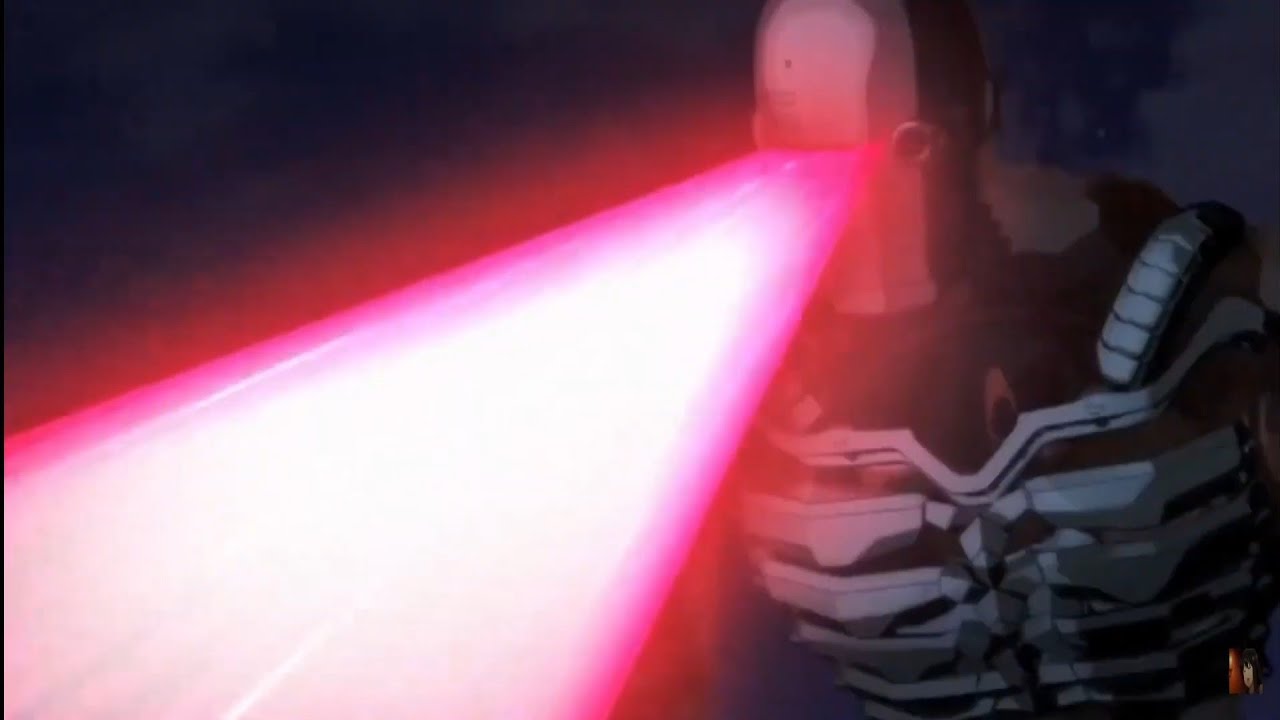 Essentially, Tetsujin has be to be destroyed by taking out Kurokawa itself, because the robot has a self-destruct mechanism of mass destruction. We know this because Tirol shows up and tells us. And Pawoo is the only one who can make this happen, because her combat style is based on “mercy” and she can split Tetsujin’s armored head, revealing the soft juicy center, without setting off the self-destruct. So everyone has a role to play, and Pawoo plants her flag quite firmly before she goes off on a suicide mission we kind of know isn’t going to be suicide.
Essentially, Tetsujin has be to be destroyed by taking out Kurokawa itself, because the robot has a self-destruct mechanism of mass destruction. We know this because Tirol shows up and tells us. And Pawoo is the only one who can make this happen, because her combat style is based on “mercy” and she can split Tetsujin’s armored head, revealing the soft juicy center, without setting off the self-destruct. So everyone has a role to play, and Pawoo plants her flag quite firmly before she goes off on a suicide mission we kind of know isn’t going to be suicide.
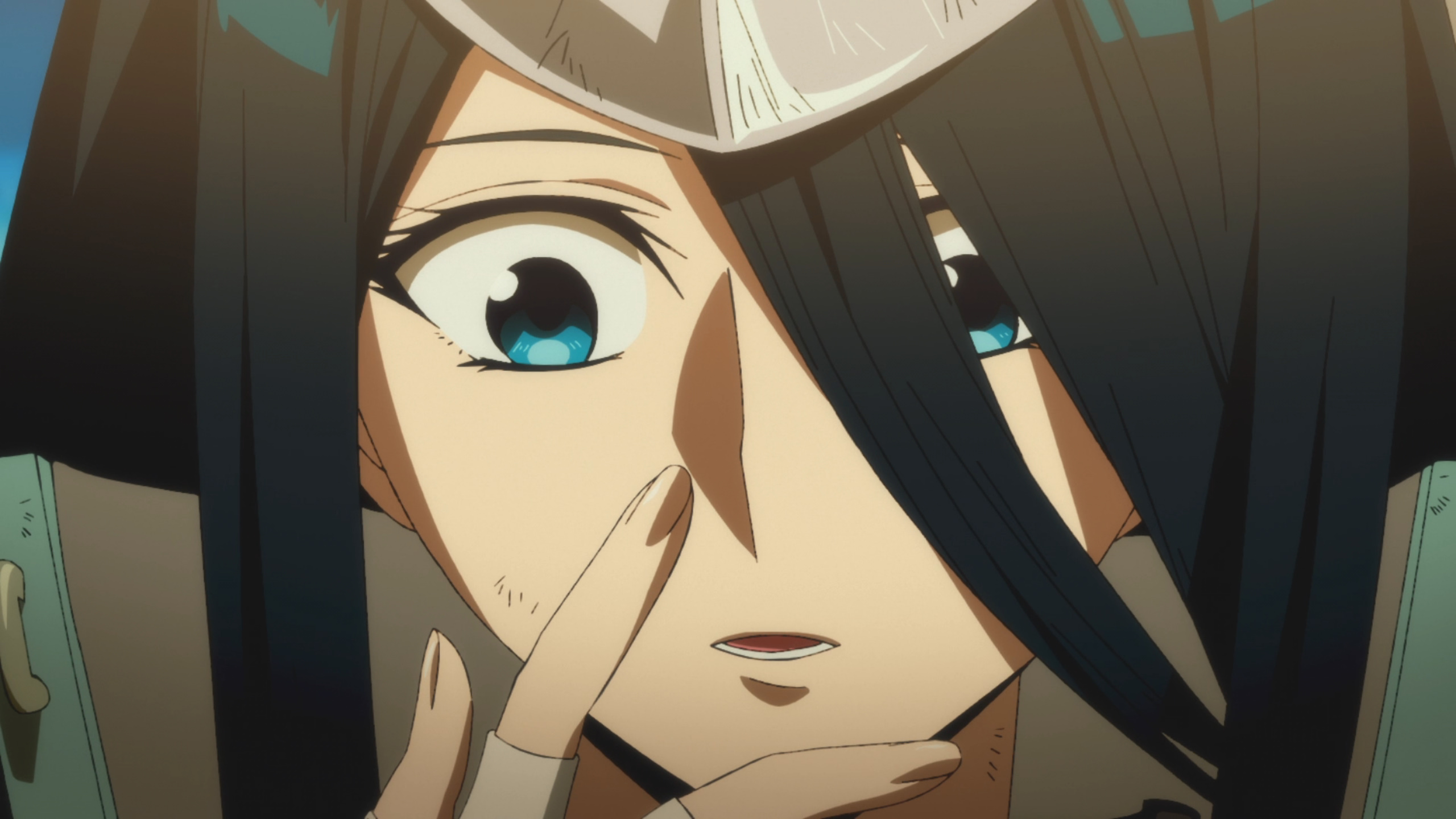 All that’s fine, I guess. It all just sort of happens because, and eventually Bisco does take out (kill, I’m not ready to assume) Kurokawa. As for the romance side of things, well…. Panda-sense does come off rather confused if you ask me. He again plays the full-on matchmaker for Bisco and his sister, but after he and Bisco take out the enemy he certainly behaves as if he’d like to be the mushroom keeper-keeper himself. It’s perfectly fine if Milo and Bisco are in love, and it’s perfectly fine if they’re not – I just think it’s a bit weird that the series doesn’t really seem to sure what it’s trying to imply.
All that’s fine, I guess. It all just sort of happens because, and eventually Bisco does take out (kill, I’m not ready to assume) Kurokawa. As for the romance side of things, well…. Panda-sense does come off rather confused if you ask me. He again plays the full-on matchmaker for Bisco and his sister, but after he and Bisco take out the enemy he certainly behaves as if he’d like to be the mushroom keeper-keeper himself. It’s perfectly fine if Milo and Bisco are in love, and it’s perfectly fine if they’re not – I just think it’s a bit weird that the series doesn’t really seem to sure what it’s trying to imply.
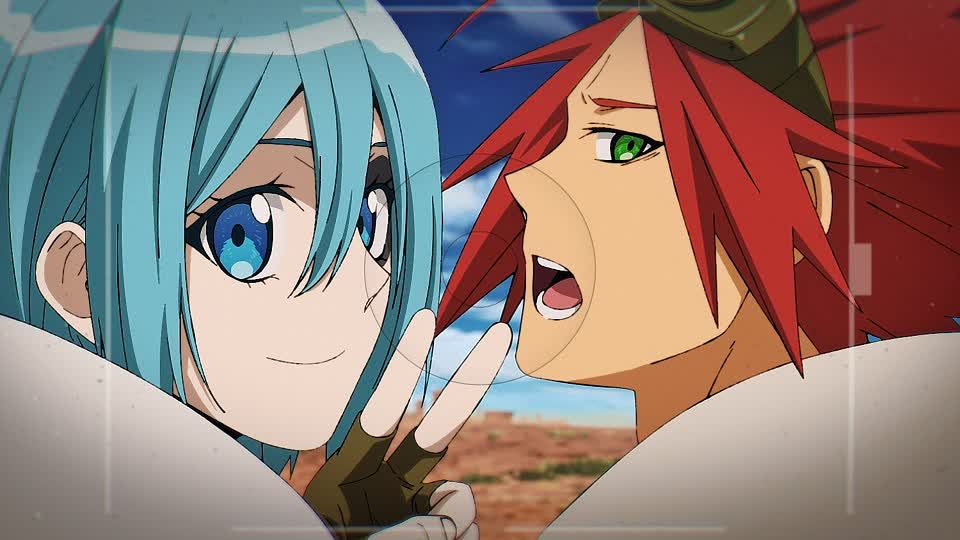 Again, no idea where the novels leave things at this point. As for the anime, it makes it clear that Kurokawa or no, the government is still the bad guy here. And that means Bisco and Milo remains public enemy number one – primarily for giving away the rust eater and cutting into the government’s health care monopoly. It’s a refreshingly subversive bit of messaging from a source medium that’s generally pretty corporatist in its outlook, though the finale doesn’t pound that angle too hard.
Again, no idea where the novels leave things at this point. As for the anime, it makes it clear that Kurokawa or no, the government is still the bad guy here. And that means Bisco and Milo remains public enemy number one – primarily for giving away the rust eater and cutting into the government’s health care monopoly. It’s a refreshingly subversive bit of messaging from a source medium that’s generally pretty corporatist in its outlook, though the finale doesn’t pound that angle too hard.
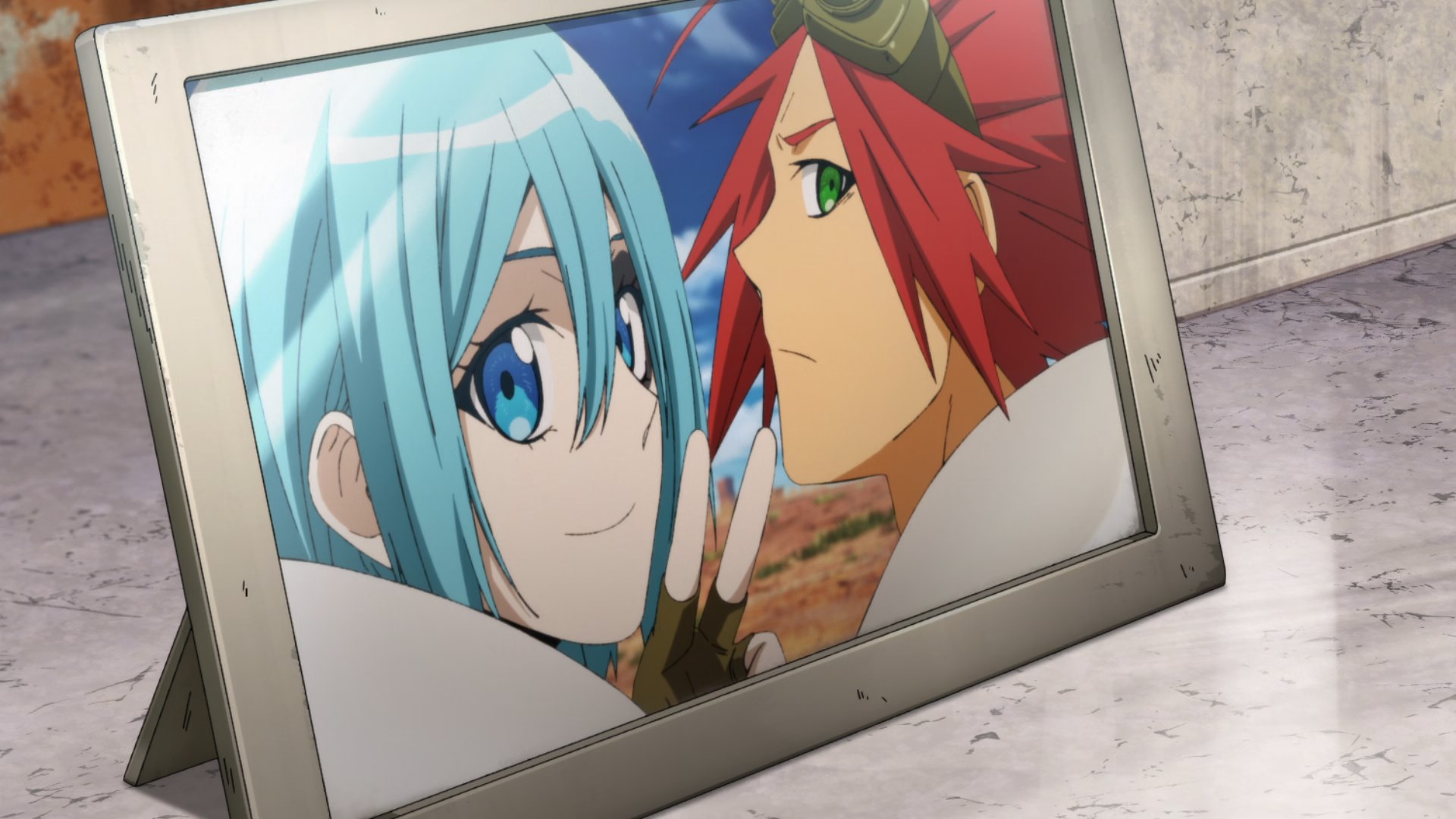 Winter was a good season for first-time series directors making their splash. Shinohara Keisuke certainly did so with Bisque Doll, and Ikaraiya Atsushi does so with Sabikui Bisco. This show didn’t have anything close to the budget that one did, but Ikariya delivered plenty of old-school panache. He betrayed his Gainax roots here to be sure, and Sabikui Bisco was a fine marriage of the novel’s world-building and the adaptation’s ability to create iconic “widescreen baroque” moments. Even if the substance did get a bit plodding in the end, the style kept powering on through. Whether we see another season of this series or not I’d love to see more anime in the same vein – the medium is marvelously matched to this style of science-fiction, and all too often is acts as if it’s forgotten that.
Winter was a good season for first-time series directors making their splash. Shinohara Keisuke certainly did so with Bisque Doll, and Ikaraiya Atsushi does so with Sabikui Bisco. This show didn’t have anything close to the budget that one did, but Ikariya delivered plenty of old-school panache. He betrayed his Gainax roots here to be sure, and Sabikui Bisco was a fine marriage of the novel’s world-building and the adaptation’s ability to create iconic “widescreen baroque” moments. Even if the substance did get a bit plodding in the end, the style kept powering on through. Whether we see another season of this series or not I’d love to see more anime in the same vein – the medium is marvelously matched to this style of science-fiction, and all too often is acts as if it’s forgotten that.


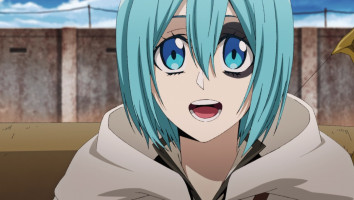
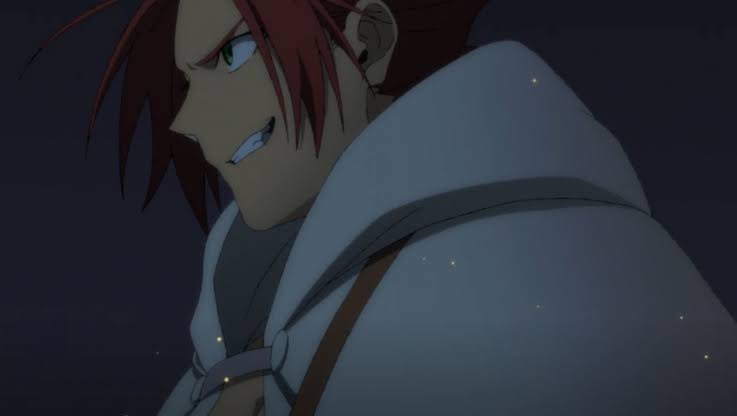


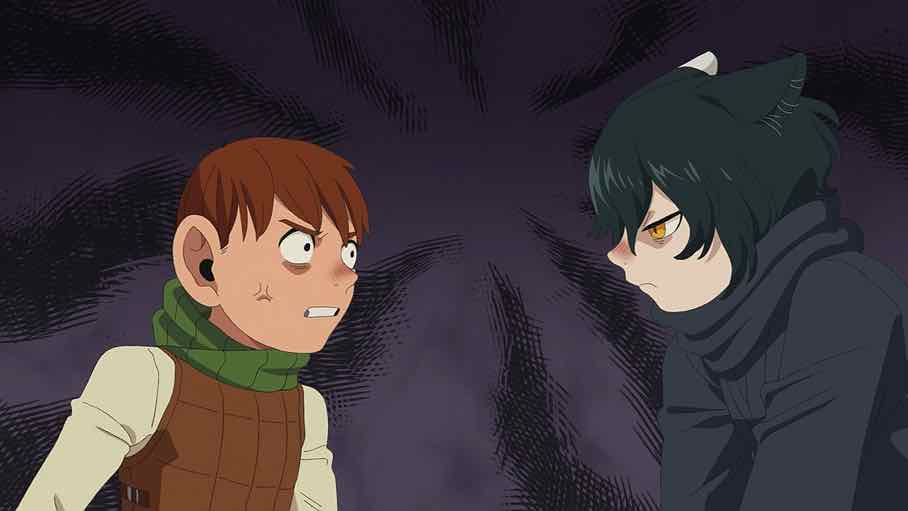
Lem
March 30, 2022 at 12:51 amFirst volume was written as a one shot so it’s not too surprising it got rather conclusive ending imo.
You had some typos in the text.
>Spring was a good season
Winter.
> Shinohara delivered plenty of old-school panache.
Ikariya.
animealex
March 30, 2022 at 1:27 amAll in all, I felt, that the beginning and middle part of the show were better than the ending. I would love to see more of this chaotic apocalyptic world and the two main characters stumbling through it, while meeting old/new friends and enemies alike.
As for the relationship-angle: Bisco managed to snag both the tough women and the nice boy. Good for him. And I really find it funny, that both siblings try to bag him while also shipping him with the other. At least they are modern in their relationships in this new world.
If there’s another season, I would watch it.
Princess Usagi
March 30, 2022 at 5:15 amI felt like the ending was a bit rushed, packing in the final part of the big Tetsujin battle and Bisco’s reveal, all while trying to wrap things up. I was actually expecting the show to have another cour or another season because the build-up seemed suited for a longer storyline. I hope they have another season-it was a truly interesting and cool show!
Riv
March 30, 2022 at 2:20 pmI enjoyed this show a lot– the whole retro, bizarro feel was fun. I was fine with the low key ending too, lots of good Bisco and Milo moments.